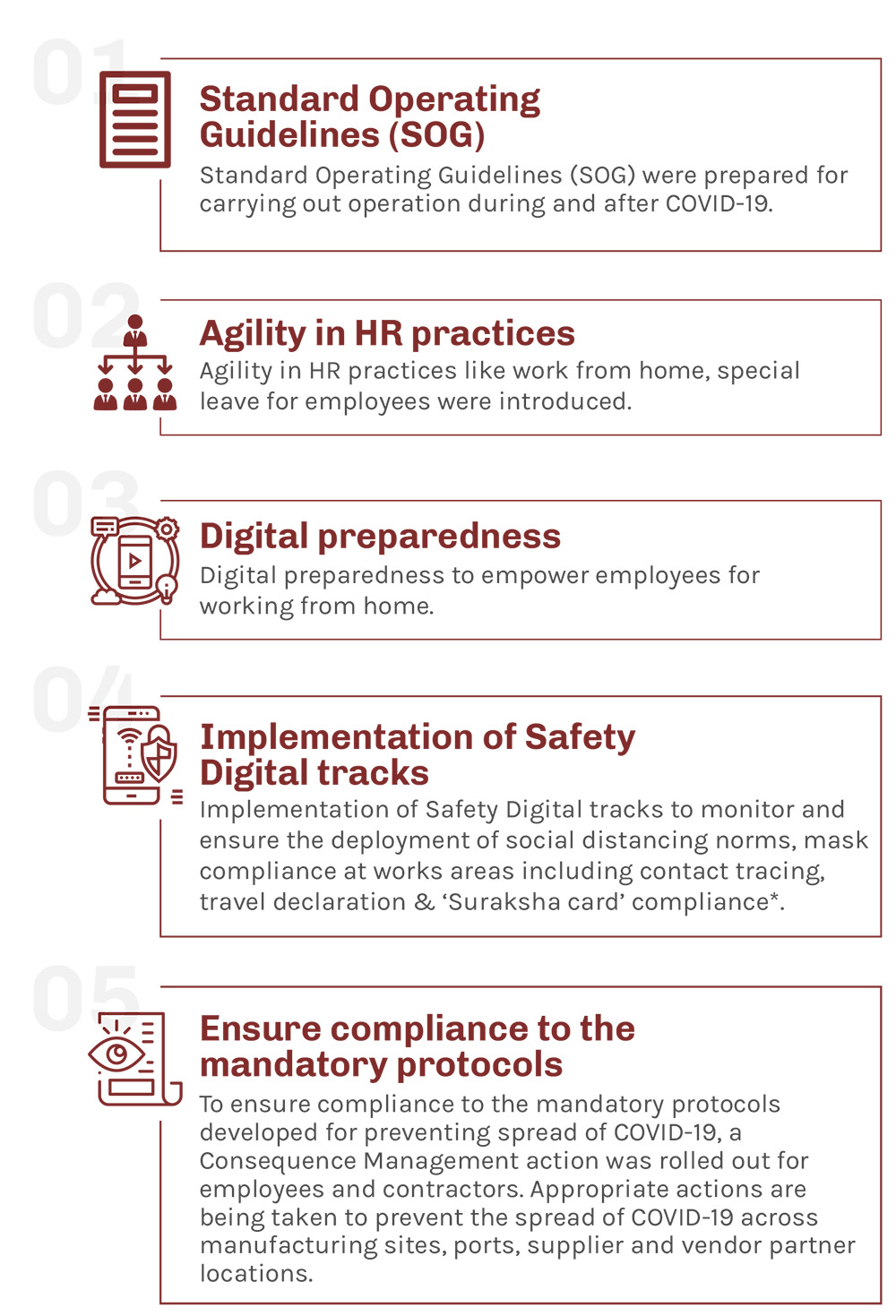Q: What is the impact of COVID-19 on the Global Steel Industry in general and Indian steel in particular?
Ans : COVID-19 has definitely affected the Steel Industry in varying degrees depending on the country and depending on the segment. In India we expect the market to drop by about 15% by the end of this year. While the expectation of drop of the market was a bit higher a couple of months back, lot of segments are showing more promise than what it exhibited a few months back. Generally speaking, in India, Steel consumption related to the rural segments has shown much more resilience than other segments. The surprise market is of course China, which instead of showing any drop, is showing a healthy increase this year and given its absolute size, reversed the global fall to a large extent. This has helped keeping prices at an acceptable level.
Q: How has Tata Steel dealt with this downturn and its impact on your product and production cycles?
Ans : Initially, in the month of March, we didn't cut down on our production and utilised that opportunity to stock up frequently sold items, so that our customer serviceability is strengthened for the future.
However, April onwards, with the intention of conserving cash, we adjusted our production southwards for a few weeks. In this period, we explored alternative overseas markets and although our domestic consumption was in the region of 50-60%, our marketing and supply chain efforts ensured that we were back to 100% production levels by June. We are still continuing at full production and as and when the domestic market is picking up, we are adjusting our export tonnages. In the future, we would like to keep a healthy level of exports in our basket and also serve our long-term consumers and this strategy is helping us in ensuring full capacity utilisation of all our equipments. A strong governance and review system is there to monitor the situation and take quick corrective actions on cash flows.
Mr Dibyendu Bose is Vice President Supply Chain at Tata Steel. He has done B.Tech (Mining) from Indian School of Mines, Dhanbad and PGDM from Indian Institute of Management, Calcutta. Mr Bose represents Tata Steel interests through Board positions and Chairmanship in a few of its subsidiaries.
Q: What impact has COVID-19 had on your raw material supply chain and shipping partners?
Ans : As you are aware, we have a significant domestic supply chain also, in addition to imported raw material supply chains and during the COVID-19 period we ensured that full production at our raw material facilities continue and we have used this period to increase the proportion of domestic raw material usage and also to increase our strategic inventory of raw materials at both the mines as well as the consumption centres. As far as imported raw material supply chain is concerned, while we adjusted our imports for a short period of time, we are all back to pre-COVID-19 levels on account of our full production performances. Our shipping partners of course had a trying time during this period, especially during the initial COVID-19 days where the quarantine period of two weeks in Indian ports for certain countries, led to the delay and ineffective usage of shipping capacities. Slower discharge and loading rates at ports due to restricted manpower availability also affected our shipping partners.
However, technological changes like the use of e-documents, which gained currency during this period, I am sure will go a long way in helping our partners in making their businesses more efficient.
Q: We understand the present growth in export volumes of steel is due to lack of domestic offtake. Can you please elaborate?
Ans : As explained in the previous answer, while it is true that Exports was a significant volume in our total Steel production in May and June, gradually the same is reaching appropriate levels as and when the domestic offtake is picking up.
Q: Do you see any lasting impact of the COVID-19 Pandemic in your products, domestic and export markets?
Ans : In the initial days of COVID-19, our attention was focused on the specific needs of the medical industry.
As an example, our distributors were catering to units producing hospital beds and our services and solutions division has focused on modular transportable accommodation which can be used for buildingan offsite hospital very quickly. We would like to continue with these efforts primarily in the domestic market.
Q: Going forward, do you anticipate any innovations and changes in the supply chain management for both imported and domestic markets?
Ans : Yes certainly - we would like to focus on scientific inventory management where disruptions do not affect services to our customers. Having said that, we have also realised that the transportation industry is one industry which restarts almost immediately after a fall and railways is one segment that continues even when nothing else moves. We would like to take these factors into account in designing our future supply chain. We would also like to see that in all our activities we adopt such measures that are immune to any pandemic like disruptions.
Q: Enough of COVID-19, in an ideal world what changes would you like to see in your raw material and finished goods supply chain systems, infrastructure, technology?
Ans : As I said, we will digitise and focus on scientific raw material and finished goods inventory so that our supply chain is far more insulated from any type of disruption. Lean and safe practises along the entire value chain will take prominence and the IT support is also being strengthened to ensure that the quality and speed of decision making within the organisation improves and we have a far higher connect with all our business partners in a secured environment.
Q: Safety has always been very critical for the Tata Group. Can you share a few thoughts on how safety will be perceived in the days ahead?
Ans : For Tata Steel, health and safety of our employees is of utmost priority. Tata Steel in accordance with government notifications, guidelines circulated by MoHFW, WHO and local administration took various initiatives to contain the spread of COVID-19, for e.g.,

COVID-19 - Government Guidelines
In general, to reduce disruptions and to keep the entire population safe in all our locations, working units have been divided into self-sustaining groups called Pods which ensures that while there is interaction within the members of a Pod, there is zero inter Pod contact. In short, the whole workforce has been divided into multiple modules and if any person is affected in a module, the system starts taking care of all the members of the module, leaving the balance population safe and productive.
* A special digital initiative which captures every employee's movement history and compliance.
